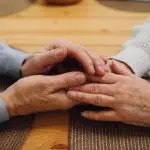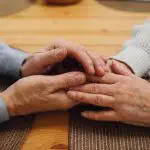Do you ever wonder what sets quilt making apart from other types of textiles? Quilt making has a rich history and unique characteristics that make it stand out from the rest.
From the attention to detail to the artistic expression, quilt making is a craft that requires both skill and creativity.
The process of quilt making involves piecing together small pieces of fabric to create a larger design, often with the use of a batting and backing.
What truly sets quilts apart, however, is the intricate stitching used to hold the layers together.
Quilts are often made to be both functional and decorative, with designs ranging from simple to complex.
As you delve deeper into the world of quilt making, you’ll discover the artistry and cultural significance that make this craft truly special.
Table of Contents
The History of Quilt Making
The history of quilt making dates back to centuries ago, with evidence of quilts found in ancient Egyptian tombs and even in the ruins of Pompeii.
In the Middle Ages, quilt making became a popular craft in Europe, with women creating intricate designs and using them as bed coverings. Quilt making also became a way to document historical events, with some quilts featuring images of important battles or famous figures.
During the colonial era in America, quilt making became a necessity as colonists didn’t have access to the same materials and textiles as they did in Europe. Women would use whatever scraps of fabric they had to create warm bed coverings for their families. Quilt making also became a social activity, with women gathering together to work on quilts and share stories and gossip.
As the industrial revolution brought about mass production of textiles, quilt making became less of a necessity and more of a hobby. However, it still remains a beloved craft for many today, with artists creating intricate designs and using unique materials to create one-of-a-kind pieces.
The history of quilt making is a rich and fascinating one, with each quilt telling a unique story and representing a piece of our past.
The Process of Quilt Making
When you start making a quilt, the first step is to pick out fabric scraps. These scraps can come from old clothes, leftover projects, or even purchased specifically for the quilt.
Once you have your fabric, you’ll need to cut them into shapes like squares and triangles. The size and shape of the pieces will depend on the design you’ve chosen for your quilt. It can be challenging to cut everything precisely, but taking the time to do so will make the sewing process much more manageable.
Next, you’ll need to sew the fabric pieces together. This can be done by hand or with a sewing machine, depending on your preference and experience level. When sewing, it’s important to keep the seams straight and even. It’s also important to make sure that the pieces are sewn together in the correct order to achieve the desired pattern. This can be a time-consuming process, but the end result will be worth it!
Making a quilt is a labor of love. It takes time, patience, and a lot of attention to detail. But, the end result is a beautiful and functional piece of art that can be cherished for years to come.
When you finish your quilt, you’ll feel a sense of pride and accomplishment that can’t be matched. So, if you’re up for the challenge, grab some fabric scraps, start cutting, and get sewing!
A warm and cozy quilt can bring comfort and nostalgia to any room.
The process of selecting fabrics and cutting them into shapes can be a creative and meditative experience.
The satisfaction of completing a handmade quilt can boost your confidence and inspire you to take on new projects.
Attention to Detail
When it comes to quilt making, attention to detail is key. You need to focus on intricate designs and patterns that make your quilt unique. Precision cutting and stitching are essential to ensure that each piece of fabric fits perfectly together.
And don’t forget about embellishments and decorative touches that add that extra special something to your finished product. So, take your time, be patient, and pay attention to the details to create a one-of-a-kind quilt that’ll be cherished for years to come.
Intricate Designs and Patterns
With its intricate designs and patterns, quilt making is like painting with fabric, creating a visual masterpiece that tells a story. The attention to detail in quilt making is apparent in the complex designs that are carefully crafted and pieced together to form a cohesive whole.
The intricate patterns found in quilts are often inspired by nature, with floral and geometric shapes being prominent themes. Creating a quilt involves a level of patience and skill that is unique to this form of textile art. Quilters must carefully choose fabrics that complement each other and work together to form a cohesive design.
The process of cutting and piecing fabric together requires precision and attention to detail. It’s not uncommon for a single quilt to take months to complete, with each stitch and detail contributing to the overall beauty and complexity of the finished product.
With so much care and attention put into each quilt, it’s no wonder that they are treasured as family heirlooms and works of art.
Precision Cutting and Stitching
You’ll appreciate the level of skill and attention to detail required for precision cutting and stitching in quilt making. Unlike other types of textiles, quilt making involves intricate piecing together of small fabric pieces to create a larger design. This process requires precise cutting and stitching to ensure that each piece fits together perfectly.
Quilt makers use a variety of tools to achieve precision cutting and stitching, including rotary cutters, rulers, and sewing machines with specialized feet. These tools allow them to cut and sew with exact measurements, creating beautiful and intricate designs.
The end result is a work of art that not only looks beautiful but is also functional and durable. The precision cutting and stitching in quilt making truly sets it apart from other types of textiles and showcases the skill and talent of the maker.
Embellishments and Decorative Touches
Now that you’ve learned about the importance of precision cutting and stitching in quilt making, let’s move on to the next aspect that distinguishes it from other types of textiles – embellishments and decorative touches.
Quilting isn’t just about creating a functional piece of fabric, but also about adding personal touches that make it unique and beautiful.
One of the most common embellishments in quilting is appliqué. This involves adding fabric shapes onto the quilt top, either by stitching them on or using fusible web. Appliqué can be used to create intricate designs, such as flowers, animals, or letters, and can be done in a variety of fabrics, textures, and colors.
Other decorative touches include embroidery, beading, and patchwork, all of which can add depth, texture, and interest to a quilt. These embellishments not only make the quilt visually appealing but also reflect the maker’s personality and creativity.
Artistic Expression
If you’re looking for a way to express yourself artistically, quilt making is a fantastic option.
Not only can you create beautiful and unique designs, but you can also incorporate personal stories and memories into your quilts.
Additionally, quilt making can be a collaborative process, allowing you to connect with others and create something beautiful together.
Using Quilt Making as a Form of Self-Expression
When using quilt making as a form of self-expression, it’s important to consider the colors, patterns, and fabrics that will effectively convey your message. The beauty of quilt making is that it allows you to create a visual representation of your thoughts and emotions.
Whether you want to express joy, sorrow, or love, you can do so through the art of quilt making. To effectively convey your message, consider using the following techniques:
- Use contrasting colors to create drama and draw the eye to specific areas of the quilt.
- Mix different patterns and textures to add depth and interest.
- Choose fabrics that have a personal significance or that evoke a certain mood or feeling.
By using these techniques and incorporating your own personal touch, you can create a quilt that not only reflects your individuality but also communicates your message to the world.
Quilt making is not just a craft, but a form of self-expression that can be enjoyed by anyone.
Incorporating Personal Stories and Memories
As you weave personal stories and memories into your quilt, you infuse it with a unique narrative that reflects your life experiences and creates a powerful connection with those who view it.
Quilt making isn’t just about creating a beautiful piece of textile, but also about telling a story. By incorporating personal stories and memories into your quilt, you’re able to express yourself in a way that’s both creative and meaningful.
When you use quilt making as a form of self-expression, you create a tangible representation of your life experiences. Whether it’s a quilt that tells the story of your family history or one that reflects your personal journey, each stitch and pattern is a reflection of your unique perspective.
By sharing your quilt with others, you’re able to connect with them on a deeper level and create a sense of community through the shared experience of storytelling.
Collaborative Quilt Making
So you’ve learned that one of the unique aspects of quilt making is the ability to incorporate personal stories and memories into the design. However, another distinguishing feature of quilt making is the ability to collaborate with others to create a single, cohesive piece.
Collaborative quilt making can involve working with friends, family, or even a whole community to create a quilt that represents shared experiences and values. This process allows for a blending of different perspectives and styles, resulting in a truly unique and meaningful work of art.
Here are just a few benefits of collaborative quilt making:
- Fosters a sense of community and connection
- Allows for the sharing of skills and knowledge
- Provides an opportunity for creative expression and experimentation
- Can be used to raise awareness or promote social causes
- Creates a lasting legacy that can be passed down through generations
Unique Characteristics of Quilts
You’ll notice that quilts have unique characteristics that set them apart from other types of textiles. Quilts are made up of multiple layers, typically a top layer of decorative fabric, a middle layer of batting or filling, and a bottom layer of plain fabric. These layers are then stitched together to create a cohesive and functional textile. The quilting process involves a great deal of attention to detail, as each stitch must be carefully placed to ensure the layers remain securely attached.
One of the defining characteristics of quilts is their use of patterns and designs. Quilts can be made using a wide variety of patterns, including traditional block patterns, applique, and free-form designs. These patterns can be created using a variety of techniques, from hand-piecing and hand-quilting to machine-piecing and long-arm quilting. The use of patterns and designs allows quilters to create unique and personalized textiles that reflect their individual style and creativity.
Another unique aspect of quilts is their ability to tell a story. Many quilts are made to commemorate special events or milestones, such as weddings, births, or graduations. Quilters can incorporate personal touches into their designs, such as embroidered names or dates, to add a personal and meaningful touch to their work. In addition, quilts can be passed down through generations, serving as a tangible link to family history and traditions.
| Unique Characteristics of Quilts | Description |
|---|---|
| Multiple Layers | Quilts are made up of a top decorative layer, middle batting or filling, and bottom plain fabric. |
| Use of Patterns and Designs | Quilts can be made using a wide variety of patterns and designs, allowing for personalized and unique textiles. |
| Storytelling Ability | Quilts can be used to commemorate special events and milestones, and can be passed down through generations as a link to family history and traditions. |
Quilt Making as a Cultural Tradition
If you come from a culture that values handcrafted textiles, chances are quilt making has been an important tradition in your family for generations. Quilt making is a cultural tradition that has been passed down from generation to generation. It’s a way of preserving family history, stories, and memories through the art of quilting.
Each quilt is unique and tells a story that has been passed down through the generations. Quilt making is not just about creating a beautiful bedspread, but it’s also about preserving cultural heritage and passing on important values and traditions. Quilt making is a way of connecting with your ancestors and honoring their legacy.
It’s a way of keeping alive the cultural traditions and values that were important to your ancestors. Quilt making is also a way of expressing creativity and individuality. Each quilt maker has their own unique style and technique. Quilt making is a form of art that allows for self-expression and creativity.
It’s a way of telling your own story through the patterns, colors, and designs of your quilt. Quilt making is a cultural tradition that is not only important for preserving family history but also for celebrating creativity and individuality.
The Future of Quilt Making
As technology advances and society becomes increasingly fast-paced, quilt making is becoming a rare and cherished art form that requires patience, dedication, and a connection to one’s cultural heritage. While some may view quilt making as an outdated pastime, others recognize its value as a meditative and meaningful activity that fosters creativity, mindfulness, and community building.
Quilt making has the power to bring people together, to tell stories, and to preserve traditions that might otherwise be forgotten. Despite the challenges that quilt making faces in a rapidly changing world, there is reason to be optimistic about its future.
Many younger generations are rediscovering the joy of quilt making and recognizing its value as a way to connect with their roots and express their creativity. Quilt making is also being embraced by contemporary artists who are pushing the boundaries of traditional techniques and using quilting as a medium for social and political commentary.
As quilt making evolves and adapts to new cultural and technological contexts, it will continue to be a source of inspiration and connection for generations to come. Whether you’re an experienced quilter or a newcomer to the craft, there’s never been a more exciting time to explore the world of quilt making. So take up your needle and thread, and join the vibrant and diverse community of quilt makers who are keeping this ancient tradition alive.
- Can You Get Organza Wet? - April 23, 2024
- Why Is Organza so Popular? - April 23, 2024
- What Do You Wear With Organza? - April 23, 2024







